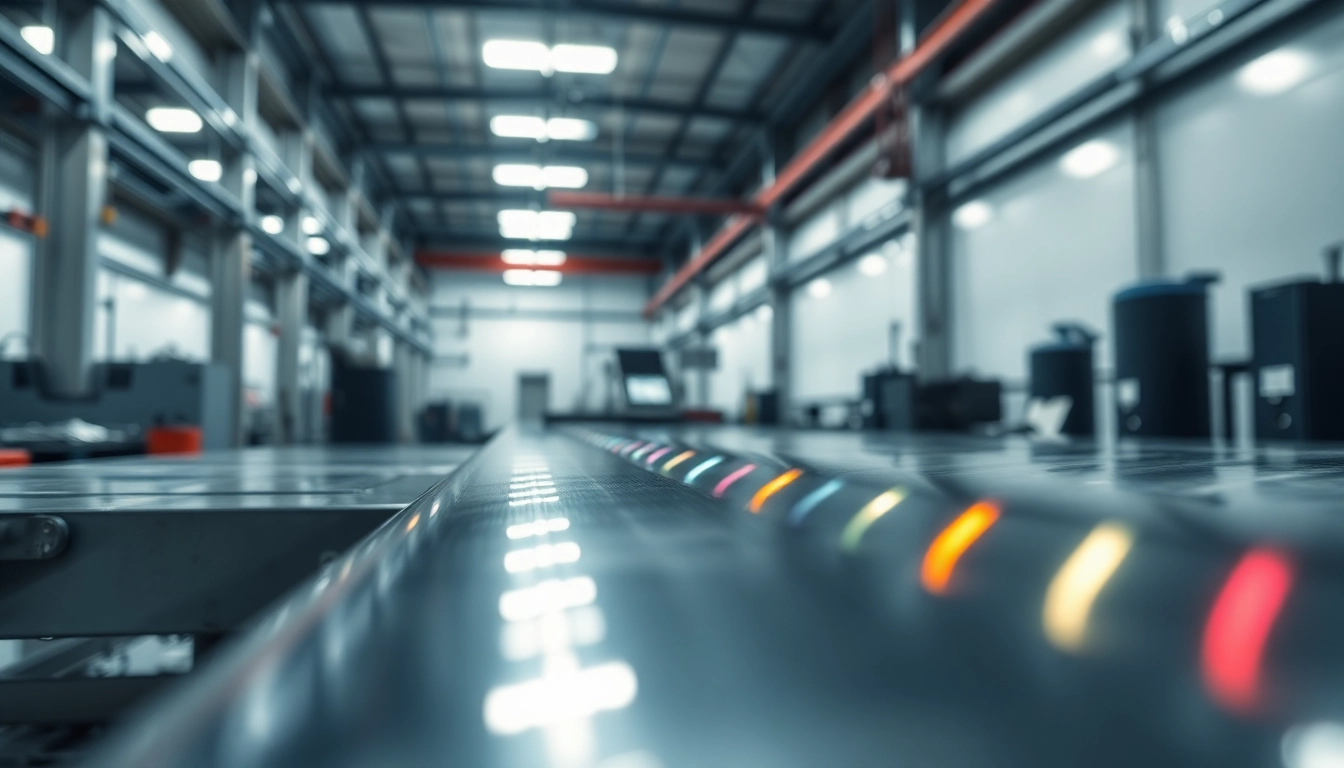1. Introduction to Machine Vision
Machine vision is a revolutionary technology that allows computers and machines to interpret and make decisions based on visual information from the environment. This capability is increasingly vital in sectors such as manufacturing, robotics, and quality control. By integrating various components such as cameras, sensors, and advanced algorithms, machine vision systems can perform automatic inspections and analyses with remarkable precision and speed. For those keen to explore the world of machine vision, understanding its fundamentals is the first step to harnessing its potential.
1.1 Definition and Origins
Machine vision refers to the ability of a computing system to interpret visual data, enabling machines to “see” and act accordingly. The origins of machine vision can be traced back to the early days of computing and industrial automation. Initially reliant on basic image-processing techniques, the field has evolved with advancements in computer processing power and imaging technologies. Today, machine vision systems utilize sophisticated algorithms and machine learning techniques to perform tasks requiring detailed visual analysis.
1.2 Key Components of Machine Vision Systems
A machine vision system primarily comprises these components:
- Cameras: Capture visual data from the environment. Options include 1D, 2D, and 3D cameras, each serving different applications.
- Lighting: Proper illumination is crucial for capturing high-quality images. Various lighting techniques (e.g., backlighting, diffuse lighting) can enhance visibility.
- Image Processing Software: This software interprets the captured images, using algorithms to identify patterns, defects, or measurements.
- Data Output: Regions of interest or defects detected by the system can be reported to operators or integrated into automated systems for real-time decision-making.
1.3 The Evolution of Machine Vision Technology
The evolution of machine vision technology has been marked by significant milestones:
- Early Days: Initial implementations involved simple cameras linked to computers that could perform basic pattern matching.
- Integration with AI: The rise of artificial intelligence has enabled machine vision systems to learn from data, improving accuracy and expanding capabilities.
- Real-Time Processing: Modern systems can process images instantly, providing immediate feedback crucial for time-sensitive applications.
- Connectivity: Machine vision systems are now often connected to the Internet of Things (IoT), allowing for enhanced data sharing and analysis across platforms.
2. How Machine Vision Works
2.1 Image Capture and Processing
The image capture process begins with the camera, which collects light reflections from objects within its field of view. The camera then converts the captured light into electronic signals, resulting in digital images. Preprocessing might be necessary to enhance image quality, including adjustments for contrast, brightness, and noise reduction. Following this, the primary processing phase employs various algorithms to analyze the image and extract relevant features.
2.2 Machine Vision Algorithms
Machine vision systems utilize a range of algorithms tailored to specific tasks. Some commonly used algorithms include:
- Edge Detection: Identifies the boundaries of objects within an image, useful for applications such as shape recognition.
- Blob Detection: Detects regions with similar properties, often applied in quality control to find defects.
- Template Matching: Compares image segments against predefined templates, essential for assembly tasks where specific orientations are required.
- Machine Learning Models: Implemented for complex analysis, these models learn and improve their decision-making based on historical data.
2.3 Integration with Automation Systems
Machine vision systems are integrated into larger automation frameworks, enhancing production lines and enabling advanced functionalities. For instance, when combined with robotic systems, machine vision can guide robotic arms during assembly, quality inspections, and packaging with high accuracy. This integration facilitates seamless operations across manufacturing processes, allowing for faster production times and comprehensive data logging for analytics.
3. Applications of Machine Vision
3.1 Quality Control and Inspection
Machine vision is pivotal in maintaining stringent quality control standards in manufacturing. By automating inspections, these systems can quickly identify defects (such as scratches, misalignments, or missing components) that human inspectors might overlook.
Applications in this domain include:
- Automotive parts inspection to ensure safety and compliance with standards.
- Electronics manufacturing, where precision is crucial for functionality.
- Food and Beverage sectors for detecting contaminants and ensuring packaging integrity.
3.2 Robotics and Automation
Robotics integrated with machine vision allows machines to react to their surroundings intelligently. This capability extends to tasks across various sectors, such as:
- Pick-and-Place Applications: Robots can use machine vision to identify and retrieve objects from a complex assembly line, markedly improving efficiency.
- Agricultural Automation: Robots equipped with machine vision can monitor crop health, identify weeds, and harvest produce, redefining agricultural practices.
- Logistics: Automated systems can manage warehouse inventory more effectively through vision-guided robots that navigate and retrieve products autonomously.
3.3 Advanced Manufacturing Solutions
Machine vision plays a crucial role in advanced manufacturing solutions, enabling practices such as:
- 3D Imaging: Employing advanced cameras that analyze depth information for precision tasks like assembly and measurement.
- Smart Manufacturing: Integrating machine vision with IoT to create responsive production environments that optimize based on real-time data feedback.
- Predictive Maintenance: Using visual feedback to anticipate equipment malfunctions, minimizing downtime through proactive interventions.
4. Advantages of Using Machine Vision
4.1 Increased Efficiency and Accuracy
The automation of visual inspections dramatically increases efficiency. Unlike human inspectors, machine vision systems can operate tirelessly and with consistent accuracy. This leads to higher throughput, fewer errors, and improved overall productivity. In quality control applications, automated inspections enable quicker feedback loops, allowing manufacturers to address issues before they escalate.
4.2 Cost Savings in Production
Investing in machine vision technology can yield substantial cost savings over time. Although initial setup costs may be significant, the long-term benefits include:
- Reduced labor costs as fewer human inspectors are required.
- Minimized waste through early detection of defects.
- Optimized resource allocation in the production process, leading to lower operating costs.
4.3 Enhancing Product Quality
Machine vision enhances product quality by providing consistent, objective assessments that are free from human bias. This technology ensures that every product meets the specified standards, leading to increased customer satisfaction and loyalty. Additionally, machine vision systems can generate valuable data for continuous improvement initiatives, further elevating quality levels over time.
5. Future Trends in Machine Vision
5.1 Machine Vision in Artificial Intelligence
The integration of artificial intelligence in machine vision is poised to redefine the capabilities of these systems. By leveraging machine learning and deep learning techniques, machine vision systems can evolve continually, improving their decision-making processes and expanding their application range. Technologies like neural networks can be applied to enhance image recognition and analysis, creating systems that not only perceive but also understand visual contexts.
5.2 Emerging Technologies and Innovations
Several emerging technologies are set to shape the future of machine vision:
- Edge Computing: Bringing computational power closer to the data source enhances real-time image processing and reduces latency.
- Augmented Reality (AR): Can augment information in the visual field, making machine vision applications more intuitive and enhancing operator assistance in complex tasks.
- Integration with Robotics: As machine vision systems become more advanced, their integration with robotics is expected to lead to more autonomous systems capable of performing a broader array of functions.
5.3 The Role of Machine Vision in Industry 4.0
As industries transition toward Industry 4.0—a trend characterized by the increasing incorporation of digital technology in manufacturing—machine vision will play a pivotal role. The ability to combine machine vision with IoT and data analytics creates a smart manufacturing ecosystem that optimizes operations, enhances productivity, and enables real-time monitoring. As organizations seek to become more agile and responsive to market demands, machine vision will be at the forefront of these transformation efforts.



